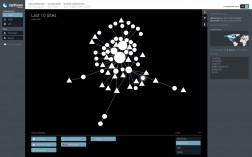Shining a spotlight on online data tracking to help people understand the Web around them. That’s what we set out to accomplish a little more than a year ago as we began building on a popular, experimental add-on for Firefox called Collusion.
While revelations about government surveillance continue to stun people around the world, there’s another area of online data collection with its own complicated transparency challenges that remains important to users. And that’s the diverse range of third party companies that shape so much of our online experiences today from advertising to social sharing to personalization. Third parties are an integral part of the way the Internet works today. However, when we’re unable to understand the value these companies provide and make informed choices about their data collection practices, the result is a steady erosion of trust for all stakeholders.
Today, we’re proud to announce the next iteration of Collusion, which we’re now calling Lightbeam for Firefox. The release is happening at at this year’s MozFest.
 Lightbeam is an add-on for Firefox that brings to light the array of first and third party companies people interact with everyday across the Web. Development of Lightbeam for Firefox is developed with support from the Ford Foundation and the Natural Sciences and Engineering Research Council, and aided by faculty and students of the Emily Carr University of Art and Design.
Lightbeam is an add-on for Firefox that brings to light the array of first and third party companies people interact with everyday across the Web. Development of Lightbeam for Firefox is developed with support from the Ford Foundation and the Natural Sciences and Engineering Research Council, and aided by faculty and students of the Emily Carr University of Art and Design.
How Lightbeam for Firefox works:
- Visualize the Web: After you download and install the Lightbeam add-on to Firefox, it will begin to create a real time visualization of the websites you visit and all the third parties that are also active on those pages.
- Analyze your connections: As your visualization grows, you can take a closer look into the relationships between the various first and third party sites that are stored in your data. You can also reset or save your data.
 Contribute open data: As a part of Lightbeam, we’re creating a big-picture view of Web tracking and of how first and third party sites are connected to each other. To help us, you can contribute your data to our Lightbeam database. Call it a Wizard of Oz moment for the Web, where users collectively provide a way to pull back the curtain see its inner-workings.
Contribute open data: As a part of Lightbeam, we’re creating a big-picture view of Web tracking and of how first and third party sites are connected to each other. To help us, you can contribute your data to our Lightbeam database. Call it a Wizard of Oz moment for the Web, where users collectively provide a way to pull back the curtain see its inner-workings.- Support for publishers: During development of Lightbeam for Firefox, we worked with a number of leading online publishers about the value of the crowdsourced data. More work is needed, though. Once the open data set has time to mature, we’ll continue to explore how publishers can benefit from additional insights into the interaction of third parties on their sites.
At Mozilla, we believe that everyone should be in control of their user data and privacy, and we want to help you have the ability to make informed decisions about your Web experience. With the Lightbeam for Firefox add-on and open data, we’re providing a valuable community research platform to raise awareness, promote analysis and, ultimately, affect change in the areas of tracking and privacy.
Lightbeam for Firefox is still in an early stage of development, this being only the second release of the add-on. All of the code is posted to Github and available for the Mozilla community to hack, expand and improve. Stay tuned for the official release of Lightbeam, and to download the add-on as we make it available at MozFest.


